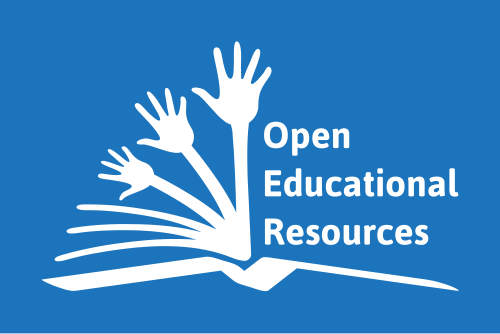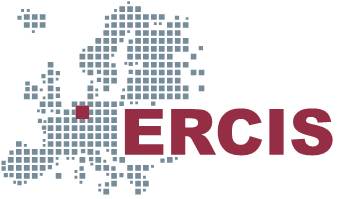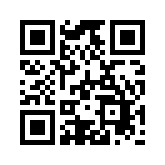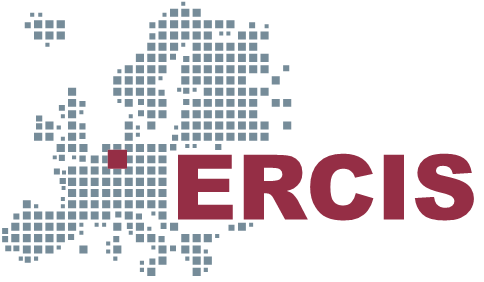Open Educational Resources
(Press ? for help, n and p for next and previous slide)
Motivation
Resource creation may follow suboptimal processes
- My guess: Remixing of teaching resources is general practice
- Search engine to discover similar courses, copy&paste into own material
- Proper credit for source material?
- Reduce time and effort, improve productivity
- Copyright issues?
- Tedious, maybe impossible (different laws worldwide)
- When ignoring copyright, we cannot (safely) publish our resources
- Wasting time and resources, limiting transfer of knowledge

“Modify” by Piotrek Chuchla under CC BY 3.0 US; cropped from the Noun Project

“Productivity” by Template under CC BY 3.0 US; cropped from the Noun Project

“licensing” by Ralf Schmitzer under CC BY 3.0 US; cropped from the Noun Project
Agenda
OER: What?
OER: UNESCO Definition
- Open Educational Resources (OER)
OER are “teaching, learning and research materials in any medium, digital or otherwise, that reside in the public domain or have been released under an open license that permits no-cost access, use, adaptation and redistribution by others with no or limited restrictions.” [Une12]
![OER Global Logo]()
“OER Global Logo” by Jonathasmello under Creative Commons Attribution 3.0 Unported; from Wikimedia Commons
- Usually, Creative Commons licensing
- Briefly, such licenses offer freedoms that would otherwise be prevented by copyright law
OER: Examples
- Physical or digital resources
- E.g., AR, article, artwork, audio, book, data, figure, game, MOOC, podcast, presentation, quiz, simulation, slideshow, video, VR
- E.g., this presentation (source file)

“Snowman” by Creative Stall under CC BY 3.0 US; cropped from the Noun Project

“Book” by MRK under CC BY 3.0 US; cropped from the Noun Project

“article” by shuai tawf under CC BY 3.0 US; cropped from the Noun Project

“course” by priyanka under CC BY 3.0 US; cropped from the Noun Project

“Audio” by Flatart under CC BY 3.0 US; cropped from the Noun Project

“Video” by Guilherme Furtado under CC BY 3.0 US; cropped from the Noun Project

“Picture” by Alice Design under CC BY 3.0 US; cropped from the Noun Project

“Slideshow” by Ralf Schmitzer under CC BY 3.0 US; cropped from the Noun Project

“Headset” by Milan Gladiš under CC BY 3.0 US; cropped from the Noun Project

“simulation” by Eucalyp under CC BY 3.0 US; cropped from the Noun Project

“quiz” by carlos sarmento under CC BY 3.0 US; cropped from the Noun Project

“open data” by Wenjie Jiang under CC BY 3.0 US; cropped from the Noun Project
OER: Licensing
- Sample licenses in line with UNESCO’s OER definition
- CC0, public domain: Creator waives all rights
- Beware! Proper academic conduct requires attribution anyways
- CC BY (Attribution): License and creator need to be credited
- CC BY-SA (Attribution and ShareAlike): License and creator need to be credited and derived works must be distributed under “same” license terms
- CC0, public domain: Creator waives all rights
- Other licenses, incompatible with 5 Rs
- Non Commercial: Does not grant right to reuse, e.g., on Wikipedia or at university
- No Derivatives: Does not grant rights to revise and remix
Incomplete Rules of Thumb for Licensing
TASL by Creative Commons
![licensing]()
“licensing” by Ralf Schmitzer under CC BY 3.0 US; cropped from the Noun Project
- Title, author, source, license
- TULLU in Germany
- Titel, Urheber*in, Lizenz, Link, Ursprungsort
- Licensees must also indicate modifications, reproduce copyright notices and disclaimers
Major Licensing Challenge
Incomplete and inconsistent source information
![Puzzle]()
“Puzzle” by Kelcey Hurst under CC BY 3.0 US; cropped from the Noun Project
E.g., OER Global logo
![OER Global Logo]()
“OER Global Logo” by Jonathasmello under Creative Commons Attribution 3.0 Unported; from Wikimedia Commons
- No title but author information at Wikimedia Commons
- Conflicting title and author information in logo manual
First page, Global OER Logo
2012, Jonathas Mello www.jonathasmello.com
Last page, OER Global Logo
Jonathas Mello
- Apparently, manual copying of license information by licensees
not feasible
- Textual specification by licensors neither
- Identifying provenance and attribution is among the most time-consuming factors for OER projects [FLGB16]
OER: Why?
UNESCO’s Perspective
- SDG4,
world peace
“Open Educational Resources (OER) support quality education that is equitable, inclusive, open and participatory.” [Une17]

“probate” by Nithinan Tatah under CC BY 3.0 US; cropped from the Noun Project

“experience” by Nithinan Tatah under CC BY 3.0 US; cropped from the Noun Project

“Sharing” by pongsakorn under CC BY 3.0 US; cropped from the Noun Project

“Peace” by Yu luck under CC BY 3.0 US; cropped from the Noun Project
Local Perspective

“Productivity” by Template under CC BY 3.0 US; cropped from the Noun Project

“expert” by pongsakorn under CC BY 3.0 US; cropped from the Noun Project

“Modify” by Piotrek Chuchla under CC BY 3.0 US; cropped from the Noun Project

“dialogue” by Template under CC BY 3.0 US; cropped from the Noun Project

“Wisdom” by pongsakorn under CC BY 3.0 US; cropped from the Noun Project
Broader Context
General movement for freedom and transparency
![Transparency]()
“Transparency” by Wichai Wi under CC BY 3.0 US; cropped from the Noun Project
- Open Access, Open Data, Open Education, Open Science, (Free/Libre and) Open Source Software (FLOSS)
- Promise of sharing, e.g., Wiki culture, maker spaces
OER: How?
- Create/revise/remix work
- Attach license
- Publish
Really?
- Yes, but …
- [Lec19]: Adopt principles of
- OER (ALMS framework)
- Software engineering (version control, separation of layout and contents, platform independence, offline use, FLOSS)
- Technical writing (single sourcing)
ALMS Framework
Criteria for OER and software proposed in [HWSJ10]
| ALMS criterion | Examples | Counter examples |
|---|---|---|
|
Access to editing tools |
Free/Libre and Open Source Soft- ware (e.g., LaTeX, LibreOffice) |
Powerpoint Google Docs |
|
Level of expertise required to revise or remix |
Not only for nOERds Challenging topic … |
|
|
Meaningfully editable |
LaTeX, Org Mode (HTML) |
(Scanned) PDF, flash, video |
|
Source-file access |
LaTeX, Org Mode (HTML) |
PDF for LaTeX PDF for office presentation |
More Requirements
- Extension of ALMS framework [Lec19]
- Requirements for “A”: Free/libre and open source software (FLOSS)
- FLOSS for learners and teachers, OER users and creators
- (FLOSS: 4 freedoms, similar to 5 Rs above, but going back to 1980s [Sta86])
- Platform independent
- Also mobile and offline
- FLOSS for learners and teachers, OER users and creators
- Requirements for “M” and “S”: Single sourcing [Roc01]
- Single, collaboratively maintained source, no copy&paste
- Separation of contents and layout
Source files with lightweight markup for collaboration with comparison and integration with version control systems such as Git
![Git Logo]()
“Git Logo” by Jason Long under CC BY 3.0; from git-scm.com
- Requirements for “A”: Free/libre and open source software (FLOSS)
Emacs-Reveal
- Free/libre and open source software
(FLOSS) to create OER presentations [Lec19b]
HTML slideshows with audio explanations
![Online Resources]()
“Online Resources” by LUTFI GANI AL ACHMAD under CC BY 3.0 US; cropped from the Noun Project
- To be viewed with standard Web browsers (platform independent), either on- or offline
- Features include
- Animations and slide transitions; speaker’s view with preview, notes, and timer; embedding of images, audio, video, mathematical formulas; table of contents; bibliography; keyword index; hyperlinks within and between presentations; themes for different styling; responsive design with touch support; quizzes for retrieval practice; code highlighting and evaluation for programming languages
- Contents separated from layout with lightweight markup language Org mode
- Satisfies above requirements
OER Presentations with Emacs-Reveal
Emacs-reveal is software to generate HTML presentations
![lecture]()
“lecture” by LUTFI GANI AL ACHMAD under CC BY 3.0 US; cropped from the Noun Project
With proper license attribution for images [Lec19c]
![licensing]()
“licensing” by Ralf Schmitzer under CC BY 3.0 US; cropped from the Noun Project
- Human-readable, e.g., images on this slide
- Machine-readable with RDFa (in HTML source code)
- (Example)
- Based on
Sample Quiz
Sample Markup
Org mode source code for earlier slide:
** OER: UNESCO Definition - *Open Educational Resources* (OER) #+ATTR_REVEAL: :frag (appear) - OER are “[[https://en.unesco.org/oer/paris-declaration][teaching, learning and research materials in any medium, digital or otherwise, that reside in the public domain or have been released under an open license that permits no-cost access, use, adaptation and redistribution by others with no or limited restrictions.]]” cite:Une12 {{{reveallicense("./figures/logos/Global_OER_Logo.svg.meta","30vh")}}} - Usually, [[https://creativecommons.org/licenses][Creative Commons licensing]] - Legal “standards” for *international/global* use - Permit *5 Rs* of openness cite:Wil14,HWSJ10: /retain/, /reuse/, /revise/, /remix/, /redistribute/ - Briefly, such licenses offer *freedoms* that are restricted by standard copyright law
- Note
- Simple markup, e.g.:
**for 2nd-level heading;-with indentation for nested lists;*and/for bold and italics- Citations to BibTeX bibliography with
cite, animation of list items with:frag (appear)
- OER logo embedded with
reveallicense- License metadata handled automatically
- Simple markup, e.g.:
- Note
Sample Live HTML Code
<style>
h1.demo-headline { color: blue; }
.green { color: green; }
#demo-id { color: red; }
</style>
<h1 class="demo-headline">Hello World!</h1>
<p class="green">This is a <i>paragraph</i> of text with class “green”.</p>
<p id="demo-id">This is another paragraph with id “demo-id”.</p>
Sample Live Python Code
def factorial(n):
if n < 2:
return 1
else:
return n * factorial(n - 1)
print(factorial(10))
OER Infrastructure on GitLab
GitLab is a FLOSS DevOps platform
![GitLab Logo]()
“GitLab Logo” by GitLab under CC BY-NC-SA 4.0; from gitlab.com
- Hosting emacs-reveal and my OER as GitLab Pages
- You could run your own instance if you preferred
- OER are (re-) generated upon source changes
GitLab CI/CD pipelines with Docker images
![Docker logo]()
“Docker logo” under Docker Brand Guidelines; from Docker
Conclusions
Spread the wOERd: What and Why?
- OER “support quality education that is equitable, inclusive, open
and participatory.” [Une17]
- Appropriate licensing is key
- Technical choices limit or open (re-) use

“probate” by Nithinan Tatah under CC BY 3.0 US; cropped from the Noun Project

“experience” by Nithinan Tatah under CC BY 3.0 US; cropped from the Noun Project

“Sharing” by pongsakorn under CC BY 3.0 US; cropped from the Noun Project

“Peace” by Yu luck under CC BY 3.0 US; cropped from the Noun Project

“Productivity” by Template under CC BY 3.0 US; cropped from the Noun Project

“expert” by pongsakorn under CC BY 3.0 US; cropped from the Noun Project

“Modify” by Piotrek Chuchla under CC BY 3.0 US; cropped from the Noun Project

“dialogue” by Template under CC BY 3.0 US; cropped from the Noun Project

“Wisdom” by pongsakorn under CC BY 3.0 US; cropped from the Noun Project
A jOERney Ahead: How?
My approach: Emacs-reveal as tool to create OER presentations
- With simplified licensing attribution
- Necessary metadata added in pragmatic ways
- Further standardization?
- Aesthetics vs legal requirements?
- Your suggestions?
- Are you interested in learning analytics for reveal.js?
- OER@WWU: Brown Bag meeting at ZHLdigital on 2020-02-06, noon
- Please talk to me or the ZHL team if you want to join
- Funding program Oercontent.nrw 2019 likely to be repeated
Dr. Jens Lechtenbörger
jens.lechtenboerger@ercis.uni-muenster.de
Lecturer
Leonardo-Campus 3
48149 Münster
Germany
Backup
License Metadata
License information should be machine-readable
![licensing]()
“licensing” by Ralf Schmitzer under CC BY 3.0 US; cropped from the Noun Project
- Overcome above challenges
- Improve tool support in general
- Creative Commons Rights Expression Language (CC REL) [AAL+12]
RDF vocabulary to express (some) licensing aspects
![jigsaw puzzle]()
“jigsaw puzzle” by Magicon under CC BY 3.0 US; cropped from the Noun Project
- (See revisited)
- RDF: Resource description framework, semantic web approach [Hor08]
- Specify knowledge in triples: subject, predicate, object
- E.g., Jens is author of a specific document
- RDFa: Embedding of RDF into HTML
- Specify knowledge in triples: subject, predicate, object
CC Attribution Requirements
- CC REL is a standard for machine-readable licensing information [AAL+12]
- As TASL and TULLU, CC REL is incomplete
- Emacs-reveal extends CC REL in pragmatic ways
| Requirement | CC REL | emacs-reveal |
|---|---|---|
|
Name creator(s) |
cc:attributionName, cc:attributionURL |
cc:attributionName, cc:attributionURL |
| Reproduce copyright notice | - | copyright |
| Reproduce license notice | license | licenseurl, licensetext |
|
Reproduce disclaimer of warranties |
- |
copyright, permit |
| Include hyperlink to OER | dc:source | dc:source, sourcetext |
| Indicate modifications | - | imgadapted |
| Indicate license | license | licenseurl, licensetext |
| - | dc:title | dc:title, imgalt |
| - | cc:morePermissions | permit |
Metadata for OER logo
- Sample metadata with license information
- Stored in text file Global_OER_Logo.svg.meta
- As part of my OER figure collection
- Stored in text file Global_OER_Logo.svg.meta
1: ; Semicolon starts comment until end of line (Emacs Lisp). 2: ; Lines 13-16 occur in comments; they illustrate available options. 3: 4: ((filename . "./figures/logos/Global_OER_Logo.svg.png") 5: (licenseurl . "https://creativecommons.org/licenses/by/3.0/") 6: (licensetext . "Creative Commons Attribution 3.0 Unported") 7: (cc:attributionName . "Jonathasmello") 8: (cc:attributionURL . "https://commons.wikimedia.org/wiki/User:Jonathasmello") 9: (dc:source . "https://commons.wikimedia.org/wiki/File:Global_Open_Educational_Resources_Logo.svg") 10: (sourcetext . "Wikimedia Commons") 11: (dc:title . "OER Global Logo") 12: (texwidth . 0.2) 13: ; (imgalt . "If the title is not suitable as alt text.") 14: ; (imgadapted . "Indicate modifications/provenance.") 15: ; (permit . "Indicate special permissions/disclaimers.") 16: ; (copyright . "Reproduce copyright notice of source.") 17: )
Sample RDFa for OER logo (simplified)
1: <div about="Global_OER_Logo.svg.png" class="figure"> 2: <img src="Global_OER_Logo.svg.png" alt="OER Global Logo" /> 3: <span property="dc:title">OER Global Logo</span> 4: by <a rel="cc:attributionURL dc:creator" href="https://commons.wikimedia.org/wiki/User:Jonathasmello" property="cc:attributionName">Jonathasmello</a> 5: under <a rel="license" href="https://creativecommons.org/licenses/by/3.0/">Creative Commons Attribution 3.0 Unported</a>; 6: from <a rel="dc:source" href="https://commons.wikimedia.org/wiki/File:Global_Open_Educational_Resources_Logo.svg">Wikimedia Commons</a> 7: </div>

“OER Global Logo” by Jonathasmello under Creative Commons Attribution 3.0 Unported; from Wikimedia Commons
(Hint: Inspect RDFa with browser extension OpenLink Structured Data Sniffer)
Bibliography
- [AAL+12] Abelson, Adida, Linksvayer & Yergler, CC REL: The Creative Commons Rights Expression Language, in: The digital public domain: foundations for an open culture, Open Book Publishers, 2012.
- [FLGB16] Falconer, Littlejohn, McGill & Beetham, Motives and tensions in the release of open educational resources: The UKOER program, Australasian Journal of Educational Technology 32(4), (2016).
- [Hor08] Horrocks, Ontologies and the Semantic Web, Commun. ACM 51(12), 58-67 (2008).
- [HWSJ10] Hilton, Wiley, Stein & Johnson, The four ‘R’s of openness and ALMS analysis: frameworks for open educational resources, Open Learning 25(1), 37-44 (2010).
- [Lec19] Lechtenbörger, Erstellung und Weiterentwicklung von Open Educational Ressources im Selbstversuch, MedienPädagogik 34, 101-117 (2019). https://doi.org/10.21240/mpaed/34/2019.03.02.X
- [Lec19b] Lechtenbörger, Emacs-reveal: A software bundle to create OER presentations, Journal of Open Source Education (JOSE) 2(18), (2019). https://doi.org/10.21105/jose.00050
- [Lec19c] Lechtenbörger, Simplifying license attribution for OER with emacs-reveal, in: 17. Fachtagung Bildungstechnologien (DELFI 2019), 2019. https://dl.gi.de/handle/20.500.12116/24399
- [Roc01] Rockley, The Impact of Single Sourcing and Technology, Technical Communication 48(2), 189-193 (2001).
- [Sta86] Stallman, What is the Free Software Foundation?, GNU's Bulletin 1(1), (1986). https://www.gnu.org/bulletins/bull1.html
- [Une12] UNESCO, 2012 Paris OER Declaration, 2012. https://en.unesco.org/oer/paris-declaration
- [Une17] UNESCO, Ljubljana OER Action Plan 2017, 2017. https://en.unesco.org/sites/default/files/ljubljana_oer_action_plan_2017.pdf
- [Wil14] Wiley, The Access Compromise and the 5th R, 2014. https://opencontent.org/blog/archives/3221
License Information
Source files for this presentation are available in this project on GitLab.
Except where otherwise noted, this work, “Open Educational Resources”, is © 2019 by Jens Lechtenbörger, published under the Creative Commons license CC BY-SA 4.0.
In particular, trademark rights are not licensed under this license. Thus, rights concerning third party logos (e.g., on the title slide) and other (trade-) marks (e.g., “Creative Commons” itself) remain with their respective holders.











